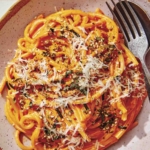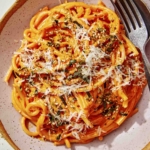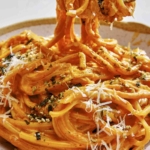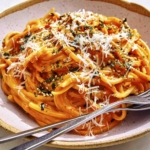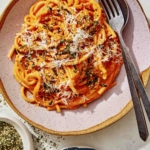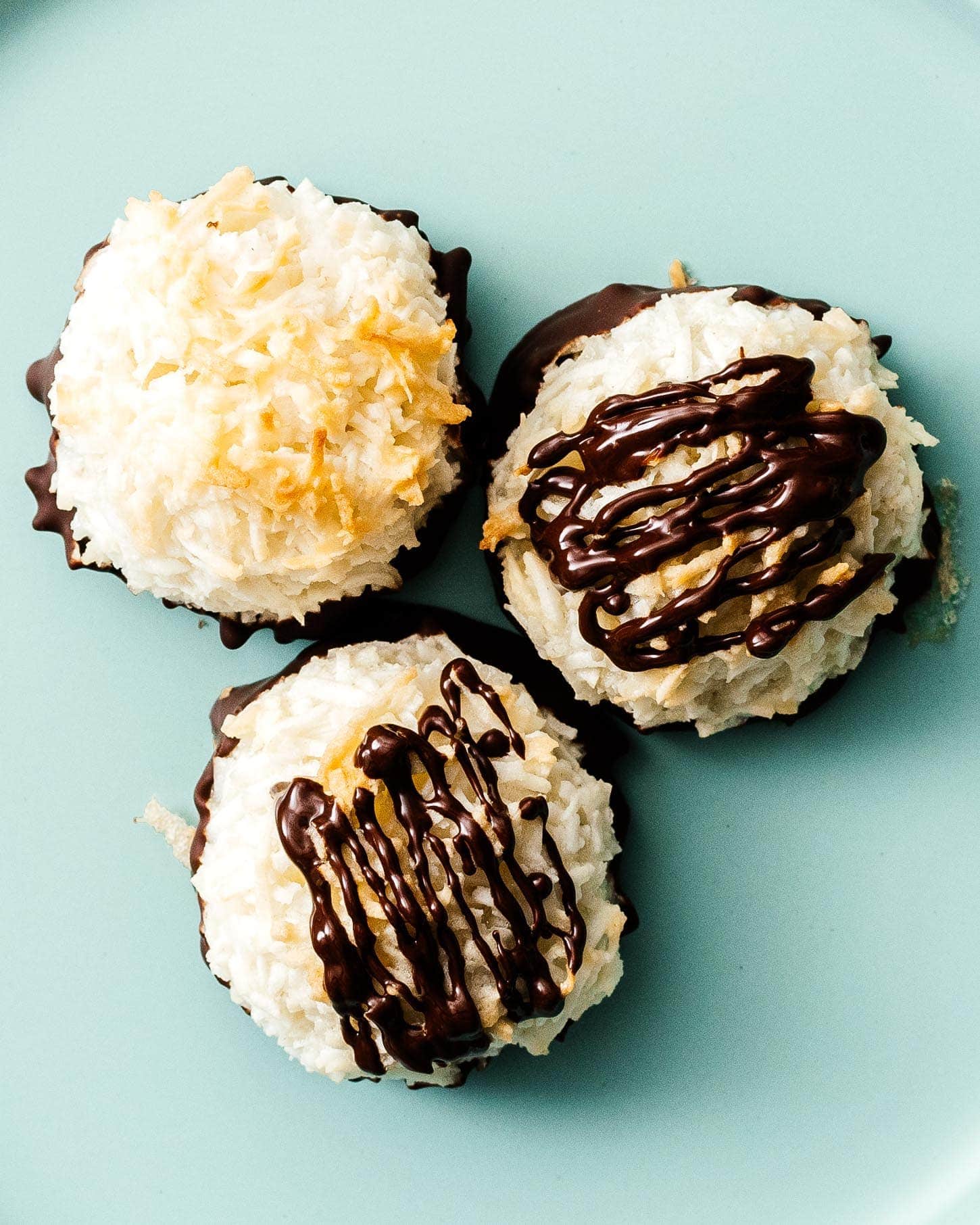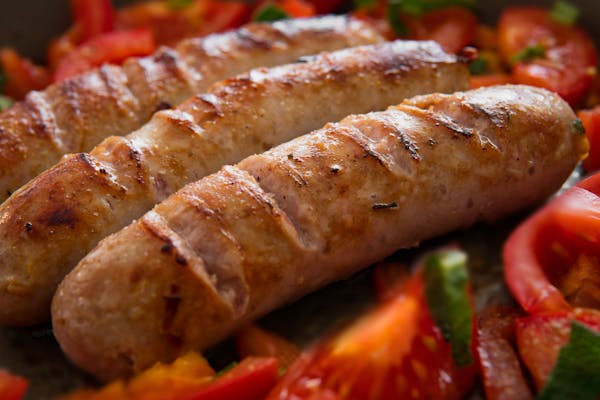
The most creamy and delicious Gochujang Noodles you’ll ever taste, made in just 20 minutes! This quick and easy recipe has a rich, creamy and spicy sauce that is so tasty! We toss our sauce together with bucatini, but you can also use udon noodles! This is the perfect weeknight recipe that you can whip up in no time!
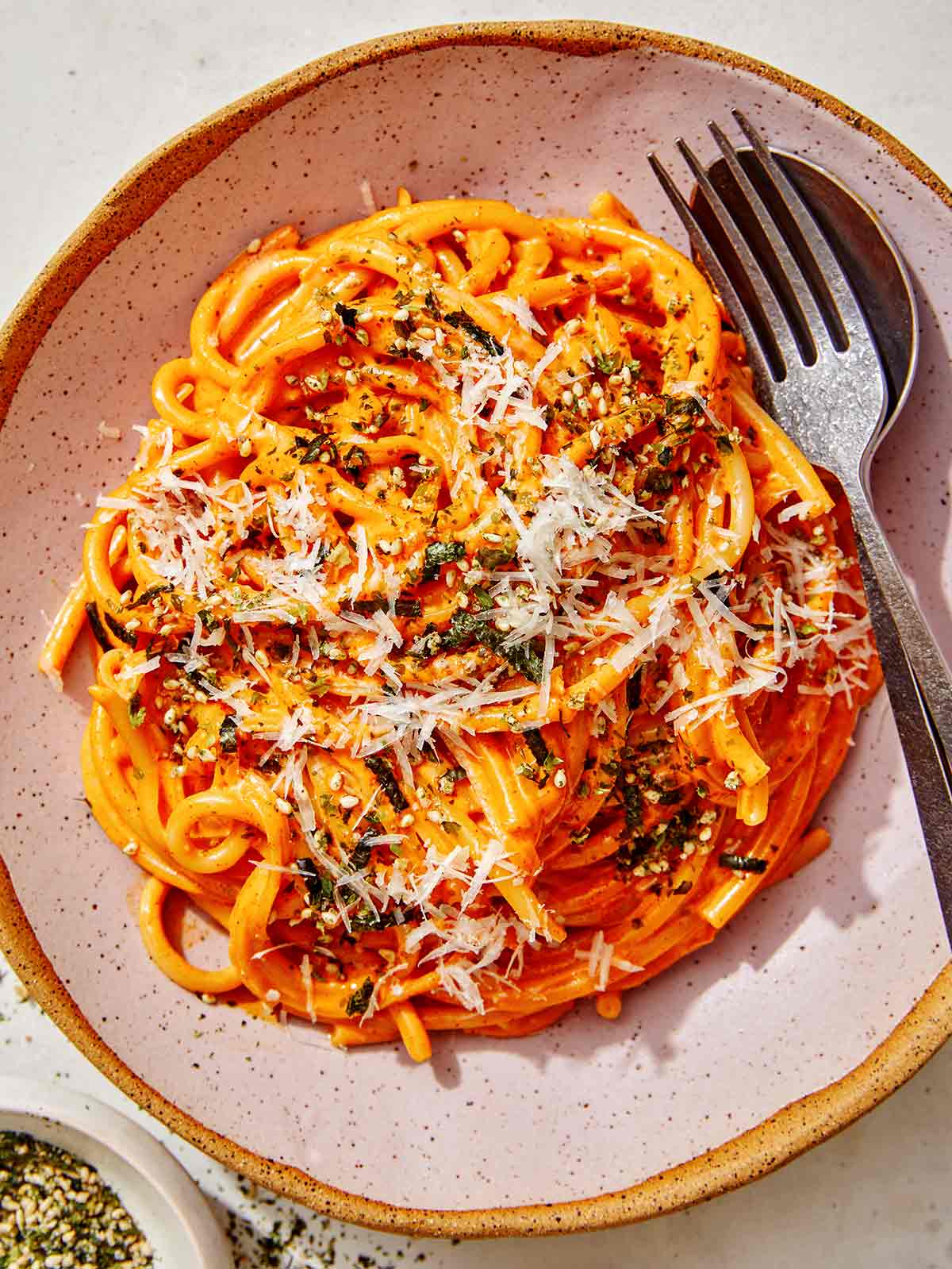
I love these Gochujang Noodles SO much! They’re creamy, spicy with a touch of umami goodness. They also only take 20 minutes to throw together, which is a huge plus and makes them a fantastic quick and easy weeknight dinner.
What is Gochujang?
Gochujang is a fermented Korean chili paste that is spicy and savory with a touch of sweetness. It’s made from gochugaru (Korean chili powder), sweet glutinous rice, meju powder, and salt. Some variations also contain sweeteners (like brown rice syrup, malt syrup or corn syrup).
How to Find the Best Quality Gochujang?
It’s best to look at the ingredients for quality with the best gochujang’s main ingredients consisting of gochugaru, rice, meju powder, and salt. As mentioned above, some brands contians sweeteners and if you can only find ones that do, you want to try to find ones that contain grain syrups and steer away from ones containing corn syrup or other artificial sweeteners.
I like to buy gochujangs that are made in Korean and one of my favorite brands is Gusdam because it’s made as closely to the traditional way of making gochujang.
Another brand I love and buy often is Sempio brand. Not only is this brand widely available in the states and pretty affordable, they use natural ingredients. The only downside for me is there use of corn syrup. I prefer grain syrups or malt syrup to corn syrup for a more subtly sweet and pleasant flavor.
Finally Chung Jung One Hot Pepper Paste is another widely available, affordable brand I really enjoy using. Their gochujang uses brown rice instead of white rice, giving their paste a distinct nuttiness to it.
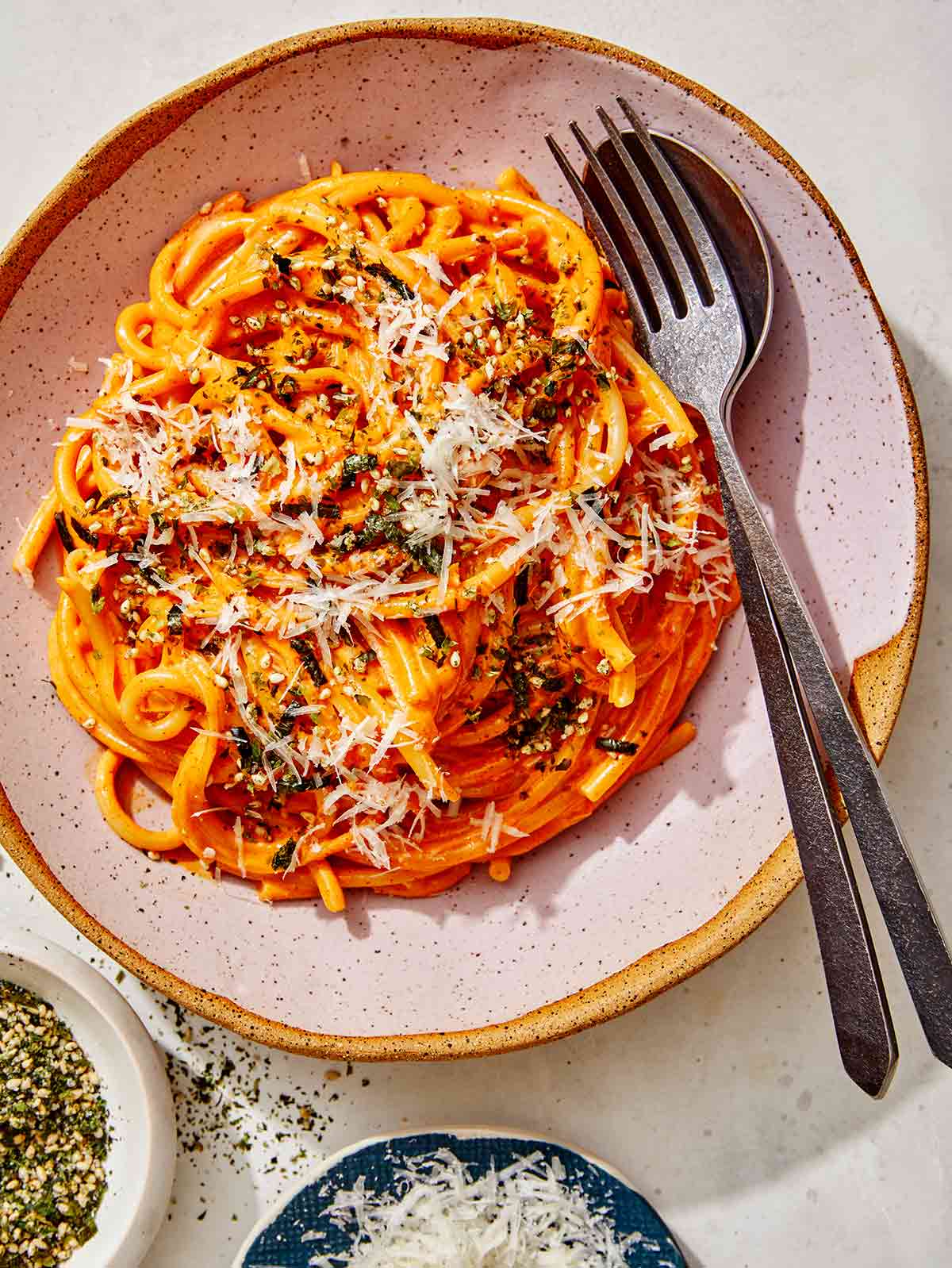
How to Make Gochujang Noodles
Ingredients
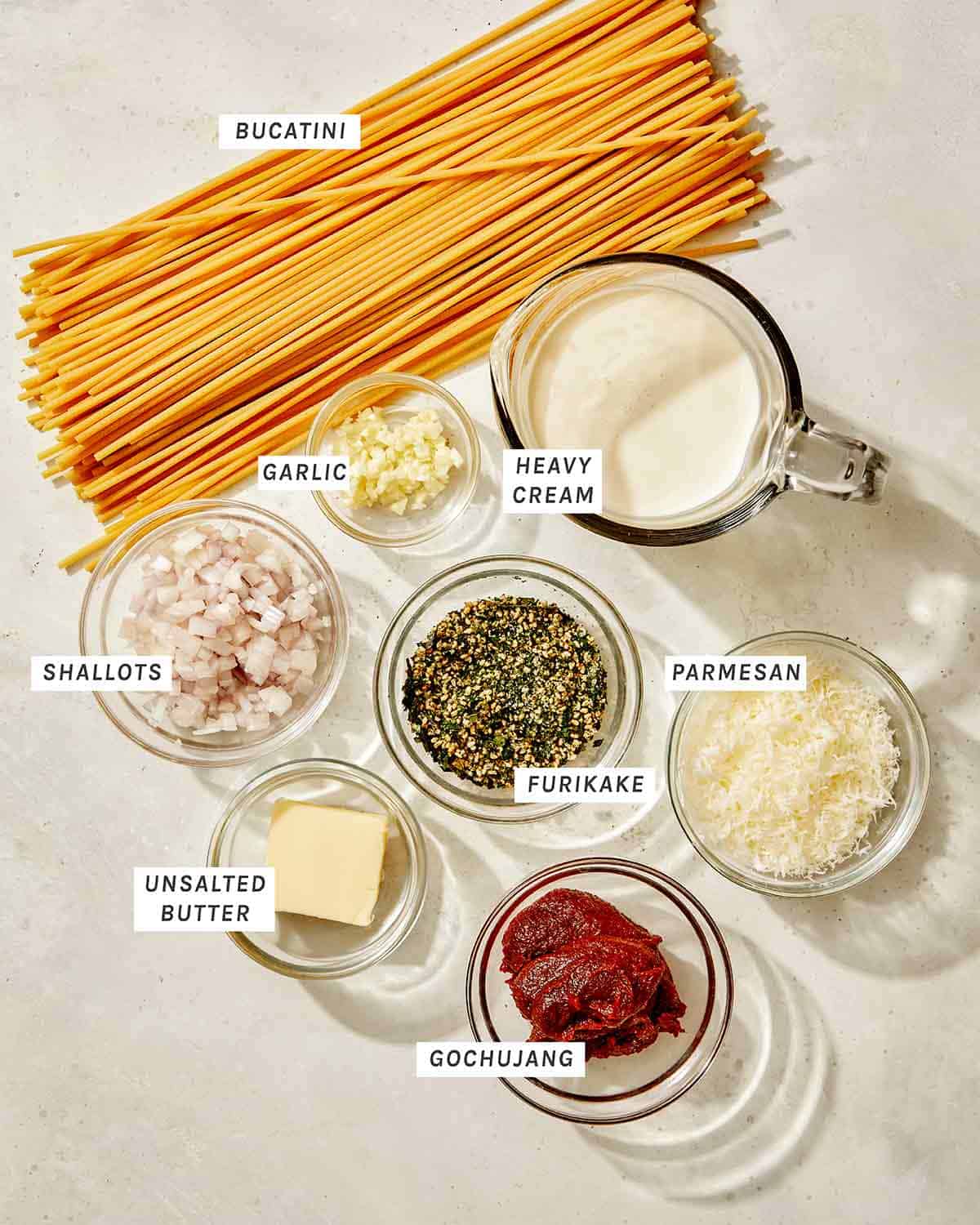
Process
- Fill a large pot with water and bring to a boil over high heat. Add a small handful of salt to the water followed by pasta. Boil pasta for 6 to 8 minutes until al dente (or desired doneness). Drain pasta, reserving 1/4 cup pasta water.
- Place a large pan over medium heat and melt butter. Add shallot and garlic and sauté for 2 to 3 minutes.
- Stir gochujang into shallot and garlic mixture and toast for about 1 minute, until chili paste deepens in color.
- Stir in reserved pasta water until mixture is smooth and bring to a simmer.
- Stir in heavy cream and simmer for 1 minute.
- Add grated Parmesan and continue to simmer until sauce slightly thickens.
- Toss pasta into sauce until evenly coated.
- Divide gochugang noodles into bowls and top each with more grated Parmesan and Furikake.
Variations
- Try switching up the noodles/pasta you use. I like to use fusilli for our gochujang noodles when we have it on hand as well as wheat based egg noodles.
- Trying using tube shaped rice cakes, like the ones used for tteok-bboki! The chewy rice cakes taste delicious swimming in the creamy and spicy sauce!
- Add an extra tablespoon of gochujang or a couple teaspoons of gochugaru for an even bigger spicy kick. Alternatively half the gochujang for a more milk flavor.
- Toss in some sautéed shrimp or shredded chicken for some added protein.
- Stir some spinach, sautéed mushrooms or blanched broccoli florets to bulk the gochujang noodles up with some veg!
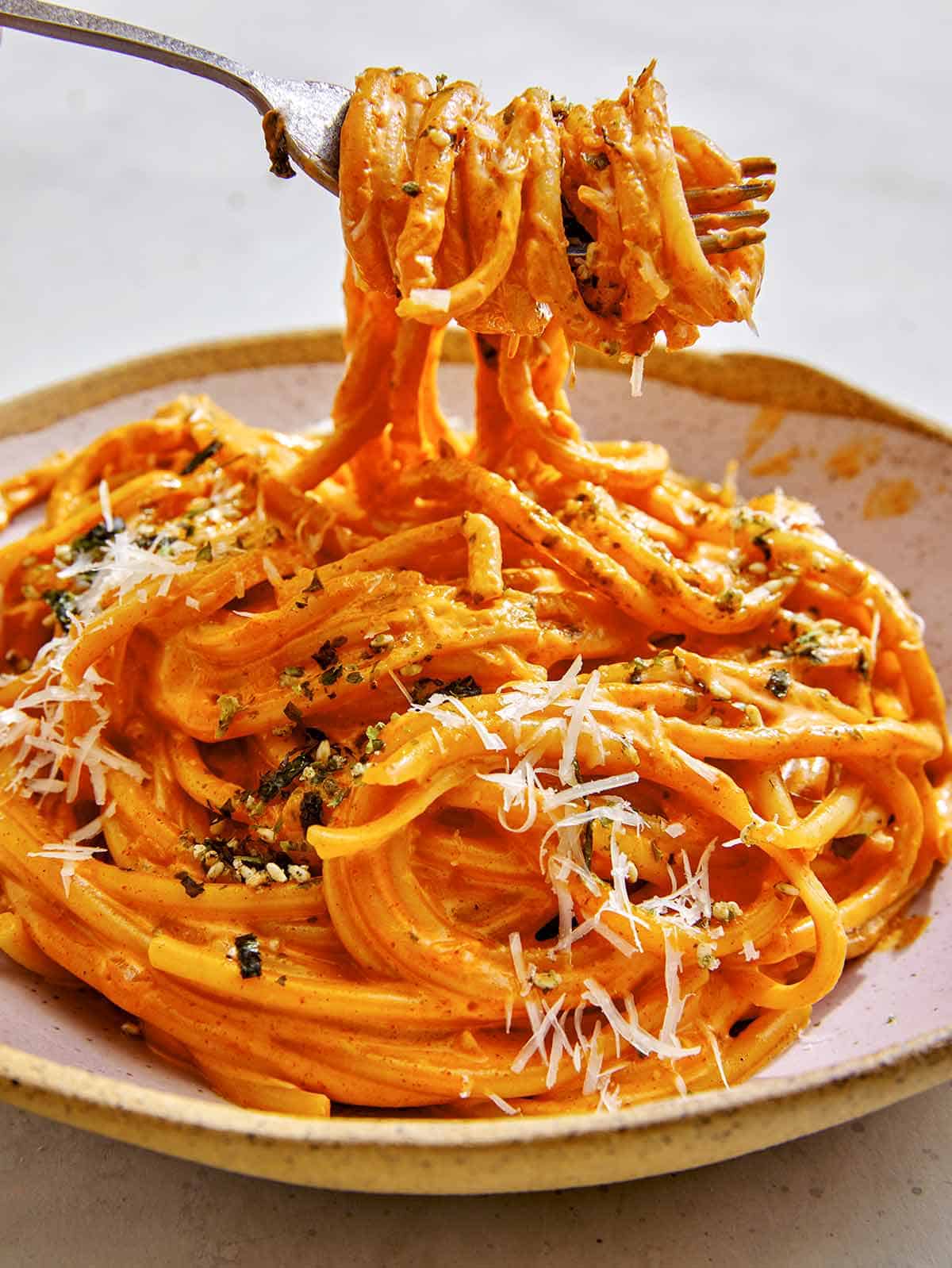
More Delicious Noodle Recipes You Will Love
Hungry for more?
Subscribe to never miss a recipe.
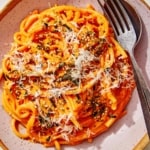
Gochujang Noodles
The most creamy and delicious Gochujang Noodles you’ll ever taste, made in just 20 minutes! This quick and easy recipe has a rich, creamy and spicy sauce that is so tasty! We toss our sauce together with bucatini, but you can also use udon noodles! This is the perfect weeknight recipe that you can whip up in no time!
Servings:
INGREDIENTS
INSTRUCTIONS
Fill a large pot with water and bring to a boil over high heat. Add a small handful of salt to the water followed by pasta.
Boil pasta for 6 to 8 minutes until al dente (or desired doneness). Drain pasta, reserving 1/4 cup pasta water.
Place a large pan over medium heat and melt butter. Add shallot and garlic and sauté for 2 to 3 minutes.
Stir gochujang into shallot and garlic mixture and toast for about 1 minute, until chili paste deepens in color.
Stir in reserved pasta water until mixture is smooth and bring to a simmer. Stir in heavy cream and simmer for 1 minute. Add grated Parmesan and continue to simmer until sauce slightly thickens.
Toss pasta into sauce until evenly coated.
Divide pasta into bowls and top each with more grated Parmesan and Furikake.
NOTES
- Try switching up the noodles/pasta you use. I like to use fusilli for our gochujang noodles when we have it on hand as well as wheat based egg noodles.
- Trying using tube shaped rice cakes, like the ones used for tteok-bboki! The chewy rice cakes taste delicious swimming in the creamy and spicy sauce!
- Add an extra tablespoon of gochujang or a couple teaspoons of gochugaru for an even bigger spicy kick. Alternatively half the gochujang for a more milk flavor.
- Toss in some sautéed shrimp or shredded chicken for some added protein.
- Stir some spinach, sautéed mushrooms or blanched broccoli florets to bulk the gochujang noodles up with some veg!
Calories: 748kcal Carbohydrates: 74g Protein: 22g Fat: 41g Saturated Fat: 26g Polyunsaturated Fat: 2g Monounsaturated Fat: 10g Trans Fat: 0.2g Cholesterol: 119mg Sodium: 373mg Potassium: 396mg Fiber: 3g Sugar: 7g Vitamin A: 1555IU Vitamin C: 5mg Calcium: 331mg Iron: 2mg
CUISINE: Korean-American
KEYWORD: korean fusion recipe
COURSE: dinner, Main Course

